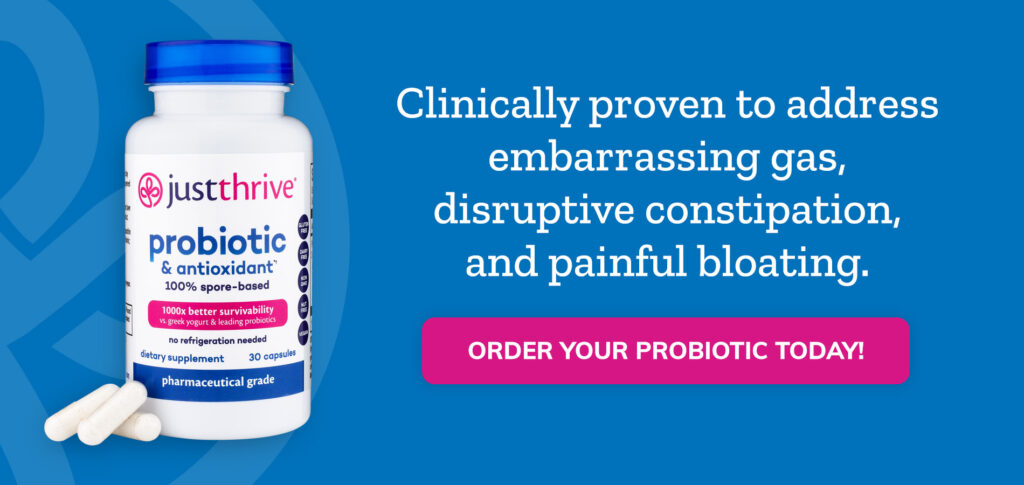Modern Western medical science has spent many years overlooking one crucial area of the human body: the gut.
Shocking, considering 60-70 million people are affected by digestive diseases in the United States alone. And, because only 36.6 million receive a gut disorder diagnosis on their first doctor’s office visit, 60-70 million may be a conservative figure.
However… the largest population by far of microbes (a mix of bacteria, viruses, fungi, and other single-celled organisms) in the body are part of the gut microbiome. These cells are with us from the beginning. There are so many in the gastrointestinal tract, they can weigh up to four pounds of biomass.
Perhaps the reason Western medicine so often overlooks or misdiagnoses gut problems is simple: we don’t understand them. You see, the microbiota in the gut contains over three million genes.
It’s 150 times more diverse than the rest of the human body.
In this article, we’re going to discuss the four most common gut issues in America — and how to eat for them. Meaning, how to make sure that what we’re consuming is:
- Not adding to our discomfort
- Actively alleviating it
- And maintaining healthy diversity and probiotic levels.
Let’s tackle this list from most gut issues to least common, starting with…
Gastroesophageal Reflux Disease (GERD)
Can’t pronounce it? Called GERD for short, this disease affects 20% of Americans, according to the associate chief of gastroenterology at the Santa Clara Valley Medical Center. Can you guess how it presents itself?
Heartburn.
Some studies have suggested that more than 15 million Americans experience these symptoms daily. But how many of those 15 million would have clocked the gut connection?
Essentially, what happens when you have GERD is this: the lower valve of the esophagus is allowing stomach content to come back up when it should be preventing that very thing from happening. If you’re experiencing heartburn more than twice a week, it’s probably GERD.
Here’s how to eat for GERD
Do Eat:
- Non-citrus fruits
- Vegetables
- Eggs
- Lean meat
- Complex carbohydrates (like oatmeal, whole grain bread, rice, and couscous)
- Root vegetables (potatoes, sweet potatoes, beets, etc.)
- Oils like olive, sesame, canola, sunflower
- Avocados
- Peanuts and peanut butter
Do NOT Eat:
- Chocolate
- Onions or garlic
- Peppermint
- Carbonated beverages
- Citrus
- Tomato
- Alcohol
- Caffeine
- Fried foods
- Fatty meats
Constipation
There’s no way around it — Americans are blocked up. It affects about 16% of Americans (though you’d imagine there are more who don’t want to admit it.) That number only goes up with age — about 33% of seniors are affected.
Although constipation is often symptomatic, meaning it could point to a larger issue, there are certainly ways to… ease the process along.
For example, if you’re chronically constipated, as in never feeling fully empty, needing to strain or push during a bowel movement, passing hard or lumpy stools, or… well, you get it…
It’s likely you need more fiber in your diet. Fiber increases the water content in stool, which makes it heavier and easier to pass through your intestines.
Here are some of the ways you can start to attack this problem with your diet.
Do Eat:
- Prunes
- Spinach, Brussels sprouts, broccoli, and other greens
- Artichoke
- Sweet Potato
- Beans, peas, and lentils
- Chia Seeds/Flaxseeds
- Citrus fruits
- Whole-grain rye bread
- Kefir (a fermented milk beverage from Western Asia)
- Apples/pears
- Popcorn
Do NOT Eat:
- Unripe bananas
- Caffeine
- White rice
- Red meat
- White bread
- Alcohol
- Chocolate
- Fast food/processed food
- Dairy products
- Chips
- Pepperoni/salami
Stay tuned for part two on Thursday as we dissect two more common gut issues and explore an unexpected connection your gut health can have on the rest of your life.
You May Also Like…




